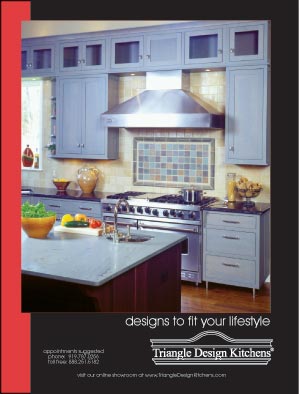
|
||||
|
Marketing Your Showroom By Philip D. Zaleon There’s an old joke that says: “The difference between ‘involvement’ and ‘commitment’ is like an eggs-and-ham breakfast: The chicken was ‘involved’ – the pig was ‘committed.’ ” Marketing your showroom is a lot like that. It’s not enough to be “involved,” but rather, you have to throw yourself into it “whole hog” and make the commitment. And, to help ensure success, that commitment has to start from day one. That means dealers need to be prepared to do plenty of up front work, investing at the earliest planning stages, long before expecting to see results. The marketing process is analogous to designing a kitchen – the better the planning, the smoother the construction. However, remember that just as designs must be uniquely geared for the client’s specific needs and tastes, the best marketing plans are specific to the firm that is using them. There is no such thing as “one size fits all” in showroom marketing. For example, all of the designers who have been quoted in this article all believe that they have been successful in marketing their individual firms. Yet, although the designers’ ultimate goal was basically the same, the strategy and process employed by each varied considerably. Each one had a different story, and different needs, yet they all used the resources they had to create a personalized marketing plan that would be successful for their specific firm. When it comes to creating that marketing plan, it all begins with a process of self-definition. That’s because your marketing strategy is largely fueled by how you define yourself and your target market. Kelli Kassor of Builders Appliance Supply in Walpole, MA defines her firm as primarily an “appliance store with some cabinetry” and, because of this, she markets the firm to attract contractors and remodelers, plus new homeowners and consumers who are “do-it-yourselfers.” On the other hand, Haskell (Hank) Matheny, ASID, IIDA, owner of Haskell Interiors Design Collection in Cleveland, TN, focuses on the “high-end consumer, as well as partnerships with regional interior designers and architects.” A third definition is offered by Brian Long, owner/partner in Harbor View Custom Cabinets in Mooresville, NC, who is in the process of redefining his firm to meet his marketing goals. “We find the builder market satisfactory for generating repetitive cash flow, but we’re looking to attract higher-end remodeling clientele,” he says. These three principals may all read KBDN, understand the art of kitchen design and be familiar with the intricacies of cabinetry, but their firms are defined differently, and their marketing strategies will differ accordingly. However, that said, they do all have one more thing in common – their objective for marketing. Kassor says that, in 2006, her firm wants to “increase sales, increase
profits and increase repeat business.” And in Long’s words, “We want to differentiate ourselves by creating a luxury image that upscale clients can relate to and average consumers will want to emulate, [even] if it costs them their last dime.” While each firm’s objective is to increase business, each will employ a different strategy in order to attract members of their target markets. The differences manifest themselves in such factors as budgets, planning, messages and ad placement. Budgets Obviously, your budget will be a factor in defining how you market your showroom. But it’s not enough to just look at the dollar amount you are comfortable spending; rather, you need to examine the cost in relation to the market you hope to reach and your firm’s location. For example, if you’re trying to advertise in New York, Los Angeles or Chicago, you will need deeper pockets than if your firm is in Raleigh, Buffalo or Bismarck. To complicate the equation, you need to consider the budget your primary clientele will be spending: If, like Matheny, you are going after the luxury market, you’ll need to consider a greater marketing budget than, say, Kassor, whose clientele is not quite as upscale. That’s because, in general, it takes money to reach clients who have money. “This industry used to preach that spending 3% of your anticipated gross receipts on marketing [was the correct way to go]. But that was before Lowe’s and The Home Depot, before the remodeling boom, and before there was a new design firm on every corner,” says Bill Camp, CKD, of the Raleigh, NC-based Triangle Design Kitchens. He adds, “Our firm has been spending 6%-7% annually.” Of course, not everyone plans their marketing budget based on a percentage of sales. For some designers, it comes down to deciding what marketing avenues work best for them and what the costs of these are, and then determining their marketing budget accordingly. Matheny’s approach, for instance, is to “spend on what has worked for us in the past, based on what we can afford.” He adds, “We don’t get caught up in percentages.” Your marketing budget may change, too, based on what resources you have available to you. As Harbor View Custom Cabinetry’s Long notes: “Early on, we were strapped for cash with the expenses of a start up [so we were limited in what we could spend], but things have gotten much better [as we began growing]. We are now spending more and more on corporate image type ads and direct mail pieces. In fact, we are running about 5%-7% of sales right now.” Planning There’s no question that planning is paramount to a successful marketing campaign. Across the board, the kitchen and bath dealers surveyed for this article said they plan their marketing on an annual basis, and believe this planning to be critical to the success of their marketing programs. Richard Ryan of Kitchen Concepts in Cincinnati, OH, adds: “We work with an agency specializing in our industry and plan our year during the fall of the previous year. This helps us maintain focus and keeps us from just reacting to sales calls. In the past, we may have been pulled into advertising that wasn’t effective, just because a salesperson would call right after we received a retainer [but now we advertise in accordance with our plan].” Of course having a plan doesn’t mean foregoing good opportunities that come up along the way. In Cleveland, TN, Matheny plans “annually, at the first of the year,” but he adds, “we also leave a ‘whatever fund’ for those [unexpected] things we may want to participate in [over the course of the year] that are always coming across my desk.” Planning is sometimes done internally, sometimes with an outside agency, and more often than not, as part of a collaboration. Especially for those without a strong marketing background, outside expertise can come in handy for creating a more streamlined and successful campaign. As Tim Aden, co-owner of Sawhill Custom Kitchens & Design, in Minneapolis, puts it, “I think dealers need to understand that they are not marketing experts. Give the marketing people input on your clients, etc., but have an open mind to [their suggestions].” The Message Your showroom’s message to the world will vary based on your target audience. As an example, Rich Ryan describes Kitchen Concepts’ target market as “40 years and up, looking for upscale to high-end full-service remodeling.” The firm’s objective, he notes, is “to let our market be aware of who we are and what we offer, so when it comes time to remodel the kitchen or bath, we will have name recognition.” Kitchen Concepts’ competition is “similar firms to ours that offer full turnkey operations,” he adds. In contrast, Kassor’s target audience is primarily allied professionals, contractors and remodelers. Builders Appliance Supply’s goal is to “increase sales, in competition with The Home Depot, Lowe’s, Sears and other appliance stores.” Price is likely to be more of an issue for Builders Appliance Supply than it is for Kitchen Concepts, making their messages very different. Additionally, since each firm is targeting a different type of client (consumer versus industry professional), the message needs to be shaped in such a way as to speak to that specific audience. Finally, Kitchen Concepts is looking toward a long-term goal (gaining greater recognition) that may not show immediate results, while Builders Appliance Supply is looking to increase sales right now. So, crafting the message for each of these firms means figuring out what is important to each audience, both short term and long term, and ensuring their messages meets these issues. Ad Placement In addition to the message itself, where you place your message will have an effect on the response you receive, both in terms of quantity of responses and quality. Kassor from Builders Appliance Supply says, “Direct mail to contractors, word of mouth, the Yellow Pages, the ‘Blue Book’ for contractors and our Web site are all effective marketing channels for us.” With the exception of the resource book for contractors, the rest are typically advertising venues for price-conscious shoppers, therefore effective choices for meeting Builders Appliance Supply’s marketing goals. By choosing advertising environments that attract the target clientele, Kassor is able to, in effect, “pre-qualify” prospects. By contrast, Kitchen Concepts’ most effective marketing channels include the “local NPR [National Public Radio] stations, lifestyle/shelter magazines and consumer remodeling trade shows,” according to Ryan. These venues, with the exception of the remodeling shows, may not fill up a showroom the way a direct mail campaign might. However, they will help meet Kitchen Concepts’ objective of “letting our market be aware of who we are and what we offer, so when it comes time to remodel the kitchen or bath, there will be name recognition drawing them to us.” So the message is helping the firm to meet its long-term goals, which are equally important. Does it Work? Marketing your showroom is a commitment: a commitment of time and money. Although not to the same degree as our ham breakfast, watching money flow out the door in support of a marketing campaign may give you the same feeling that the pig had. In reality, it takes time to see results, but consistency is the key, and lead tracking will help ensure you are spending your money wisely. Although he has only been marketing for a little over a year, Matheny offers this advice: “Track your leads. We ask each visitor to our showroom to complete a ‘registration’ form, and that includes a ‘where did you hear about us?’ question. I literally saw an impact after one month, and after three, you could really begin to see the effects.” Gretchen Cutsler, director of marketing for Kitchen Design Center in Beaufort, SC, measures her marketing campaign through increased sales. “Since we put our marketing plan into effect, and made a conscious effort to cold-call the local builders, architects and interior designers, our sales have increased over 25%.” Being able to measure results assures her that she is on the right track, and provides additional revenue to invest in future marketing efforts. Indeed, tracking leads will help weed out the less effective marketing investments while focusing on the ones that really pay off. “We have seen results immediately, generally within days, especially in the case of direct mail and monthly magazine ads,” states Harbor View Custom Cabinets’ Long. “Every time we send out a direct mailer or run an ad in the higher end local full-color publications, we see an immediate hit. We track the source of every lead.” Of course, just because something doesn’t show instant results doesn’t mean it isn’t working. Kitchen Concepts, located in the highly competitive Cincinnati market, has seen a slower return on its marketing investment, yet the firm was willing to stick to the plan in order to pursue long-term growth. Ryan notes, “I would say that we were advertising for at least a year before we felt confident that our leads were a result of that effort, rather than drive-bys or referrals. However, today we can see that our leads are consistently from the marketing program.” He adds, “Clients tell us ‘we see you everywhere’ or ‘we saw you in a magazine’ [although they can’t always tell us which one].” This kind of recognition can take time, but Ryan believes it has great value, and therefore is worth the longer-term investment. As he points out, “Although it was difficult, we were patient – and it has really paid off for us.” In today’s economic guessing game, it’s probably more judicious than ever to make marketing a priority. It’s common across all industries to cut marketing and advertising first when the economy looks shaky; but those who do the opposite are likely to better weather the storm overall. Paul McDonald, president of Royal Cabinet Co. in Hillsboro, NJ, says, “Spending money on advertising is always a tough decision when times are good, but the mood of the market cannot be predicted. Business levels can go from painfully busy to excruciatingly slow in a matter of two months. Continuous advertising is not wasted on good times, as customers will perceive your company in a better light and be willing to pay more to buy from a ‘company they know.’ “In slower times, continuous advertising brings opportunities that your silent competitors don’t see. Not every ad you run will produce visible results, but the effect of continuous advertising is cumulative; your business will grow as a result.” A creative analogy is offered by Amir Ilin, president of the Paramus, NJ-based Küche+Cucina: “Marketing your company is just like driving a car – as long as you maintain a certain speed, your car uses less gas, and when you hit a puddle, you should be able to drive right through it. If you stop and go, your car uses more gas overall and if you hit a puddle, it will take a lot more gas to get you out. Not to mention that you might get stuck.” The point is that marketing pays big dividends, according to those who have taken the plunge. However, getting from where you are today to achieving your marketing goals is not always a straight line. Defining your firm, your market and your goals will help create a clear path for your business, and help you define your own version of success. Like designing a kitchen, there are guidelines to follow, but it’s equally important to personalize your marketing plan in accordance with what makes your firm unique. Remember, no matter how wonderful your firm is, it will never reach its potential without a strong marketing plan. In a world where perception is just as important as reality, kitchen and bath design firms need to be sure that they, just like their finished projects, look as great as their work. KBDN Philip D. Zaleon is founder and president of Chapel Hill-based Z promotion & design – a full service integrated marketing and creative agency focusing on the kitchen and bath industry. Zaleon can be reached at Z promotion & design, P.O. Box 17291, Chapel Hill, NC 27516; Tel: 919-932-4600; E-mail: phil@kitchenmarketing.com; Web site: www.kitchenmarketing.com. |
|
|||
 |
||||
|
copyright © 2006 |
||||
Buy Phil Zaleon's book, a marketing guide specifically written for the kitchen and bath professional

Click the cover to purchase your copy.
|
From time to time, we interview Kitchen and Bath
Professionals for articles, market research and opinions, if you are
interested in submitting your name to our database, follow the link
below. |
Take a Break with a game of
Tic-Tac-Toe
| ABOUT US | CONTACT US |
HOME | ABOUT US | SERVICES | PORTFOLIO | Zpd.TIPS | KITCHEN MARKETING BLOG | SITE MAP



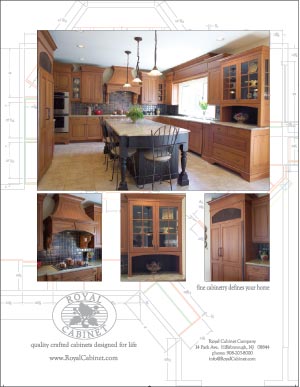 Royal Cabinet Co. subscribes to the theory that it’s important to
advertise even when times are good and business is plentiful, as this
will raise consumer awareness and help to keep business flowing in,
even when the market is less strong.
Royal Cabinet Co. subscribes to the theory that it’s important to
advertise even when times are good and business is plentiful, as this
will raise consumer awareness and help to keep business flowing in,
even when the market is less strong.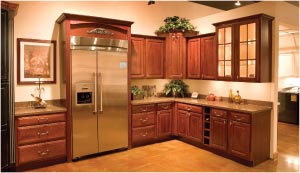
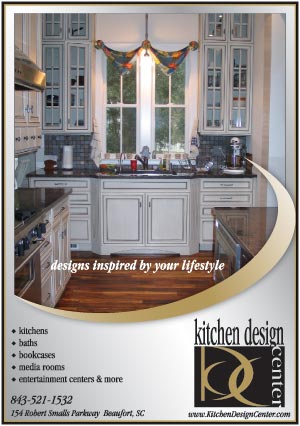
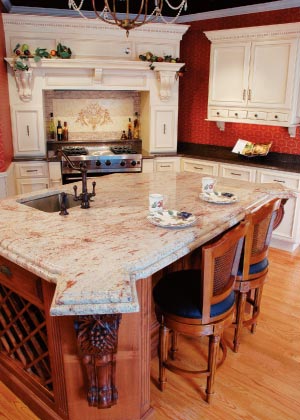
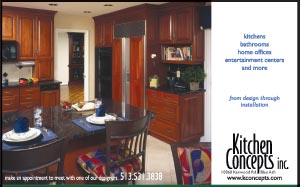 Kitchen Concepts, located in the highly competitive Cincinnati market,
gears its marketing toward the upscale consumer, with a goal of
enhancing its name recognition factor among high-end clientele.
Kitchen Concepts, located in the highly competitive Cincinnati market,
gears its marketing toward the upscale consumer, with a goal of
enhancing its name recognition factor among high-end clientele.
